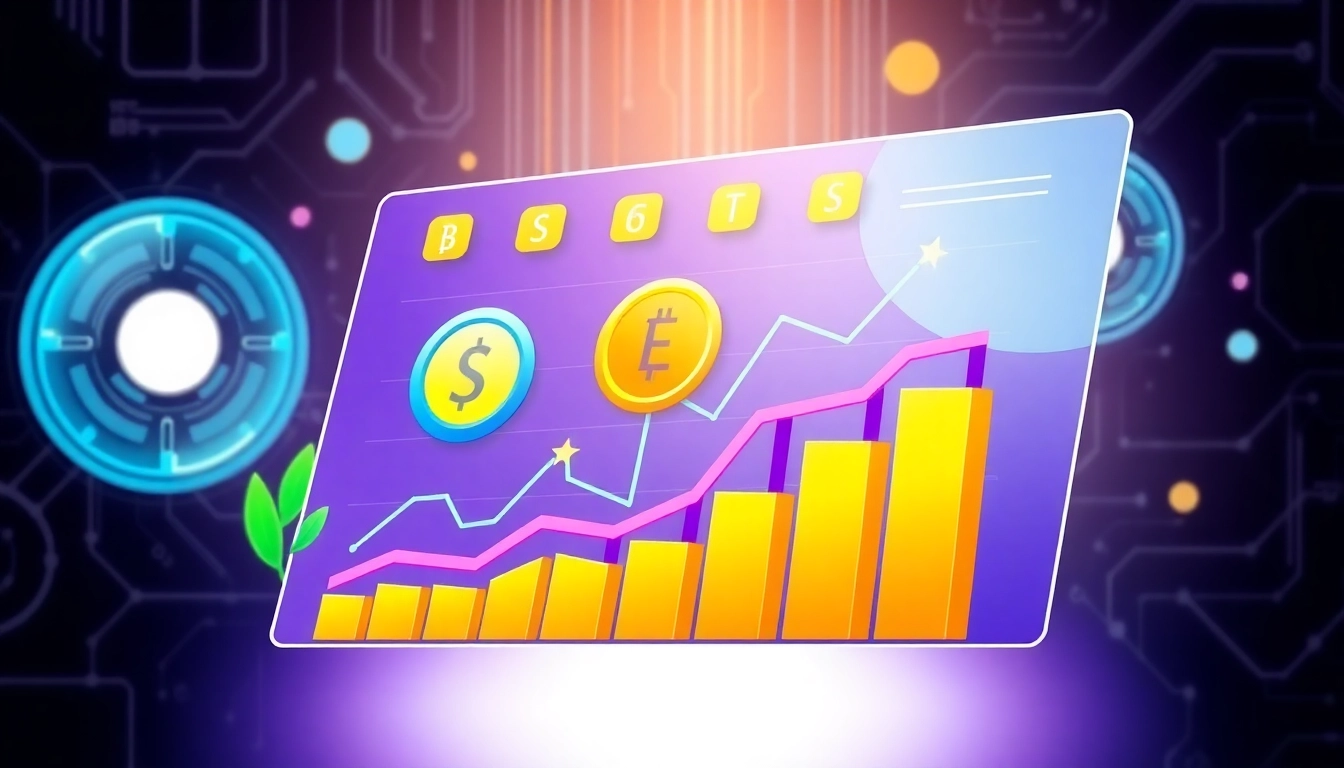Introduction to Token Rating Systems
In the rapidly evolving world of cryptocurrency, a token rating system plays a crucial role in helping investors assess the viability and potential of various digital assets. As thousands of tokens compete for attention in a saturated market, a standardized method for evaluating these assets is increasingly essential. Token rating systems offer insightful evaluations and provide a transparent view of the inherent risks and opportunities associated with cryptocurrency investments.
What is a Token Rating System?
At its core, a token rating system is a framework used to evaluate and categorize cryptocurrencies based on predefined criteria. These systems analyze various factors, including technology, compliance, market trends, and economic fundamentals, to assign a rating that reflects the potential value and stability of a token. Similar to credit ratings for traditional financial instruments, token ratings serve as a guiding tool for investors, enabling them to make informed decisions before committing funds.
Importance of Token Ratings in Cryptocurrency
The cryptocurrency landscape is notoriously volatile, with new projects emerging daily alongside established ones. Investors often struggle to identify which tokens hold genuine promise. Token ratings serve to mitigate this uncertainty by providing an analytical perspective that can highlight strengths and weaknesses within a project. By employing a standardized rating, these systems foster greater trust and reliance among participants in the crypto ecosystem, thereby contributing to market stability and enhanced user confidence.
Key Terminology and Concepts
To fully understand token rating systems, it is essential to grasp some key terms:
- Market Capitalization: A measure of a token’s total value, calculated by multiplying the current price by the total supply of tokens.
- Liquidity: The ease with which a token can be bought or sold without drastically affecting its price.
- Utility Token: A type of token that provides users access to a product or service within its ecosystem.
- Security Token: Tokens that represent ownership of an asset and often come with regulatory compliance.
- Whitepaper: A detailed document created by a project team outlining its vision, technology, and use case for the token.
How Token Rating Systems Work
Understanding how token rating systems operate is crucial for investors keen on leveraging this tool. The process typically involves several stages, including data gathering, analysis, and deriving scores that define the rating.
Data Collection and Analysis Methods
Token rating systems utilize diverse data sources to gather relevant information. This may include:
- On-chain Data: Information recorded on the blockchain, such as transaction volume, wallet addresses, and smart contract interactions.
- Off-chain Data: External factors affecting a token’s performance, like market news, social media sentiment, and competitor analysis.
- Technical Audits: Evaluations performed by third-party services to assess the underlying technology and security features of a token.
By synthesizing these data points, rating systems can offer insights into a token’s market potential and stability.
Scoring Algorithms Explained
Once the data is collected, scoring algorithms come into play. These algorithms process the information through a variety of mathematical models, assessing factors such as:
- Team Credibility: The background and expertise of the project team.
- Market Demand: Analysis of user interest and demand for the token based on market activity.
- Technology Evaluation: A deep dive into the token’s technological framework and its scalability.
Depending on the criteria set by the rating system, the output score is generated, typically falling within a predefined range (e.g., 1-10 or A-F).
Understanding Risk and Reward Assessments
Another vital aspect of token rating systems is their capability to assess risk and reward dynamics. By comparing various tokens and evaluating their potential returns against associated risks, these systems empower investors to make more holistic choices. This often involves using risk metrics such as volatility, drawdown measures, and historical performance benchmarks to gauge potential future behavior.
Benefits of Using Token Rating Systems
The integration of token rating systems into investment strategies offers numerous benefits, particularly for less experienced investors seeking guidance within the complex cryptocurrency landscape.
Enhanced Decision-Making for Investors
Data-driven insights generated by token rating systems can substantially enhance decision-making. Investors equipped with solid analysis are able to differentiate between high-potential projects and those fraught with risk. This is particularly valuable in an environment where emotional trading can lead to poor outcomes.
Transparency in the Crypto Market
Transparency is a significant issue in the cryptocurrency market, as the decentralization of information can lead to misinformation. Token ratings provide a clearer picture by standardizing metrics that investors can trust. This transparency encourages wider participation in the market, as users feel more confident investing based on rational data instead of rumors.
Case Studies of Successful Token Ratings
Several platforms have successfully utilized token rating systems to guide investment decisions. For instance:
- CoinGecko: This platform employs a robust rating mechanism that takes into account developers’ activity, community engagement, and liquidity measures, helping users arrive at more informed decisions.
- Messari: With its comprehensive data offerings and unique scoring algorithms, Messari provides insights that have been instrumental in guiding institutional investment into the crypto market.
These case studies illustrate the impact that effective token evaluation can have on investment behavior and market dynamics.
Challenges in Token Rating Systems
While token rating systems offer valuable insights, they are not without their challenges. Understanding these obstacles is crucial for investors who seek to navigate the complexities of token evaluations.
Accuracy and Data Reliability Issues
One of the primary challenges faced by token rating systems is ensuring accuracy and reliability in data collection. Since the cryptocurrency market is dynamic, a token’s attributes can change rapidly, making it essential to halt outdated information from influencing ratings.
Regular updates and rigorous verification processes can mitigate these issues. Employing real-time analytics tools also enhances the capacity for accurate ratings.
The Role of Market Sentiment
Market sentiment plays a significant role in the perceived value of cryptocurrencies. Rating systems must incorporate mechanisms to consider sentiment analytics without overly weighting subjective opinions. Balancing quantitative data with qualitative insights ensures a well-rounded perspective on token viability.
Regulatory Considerations and Compliance
Regulatory frameworks surrounding cryptocurrency are evolving. Rating systems must be adaptable and compliant with legal guidelines, particularly as governments worldwide begin enacting strict measures aimed at monitoring digital asset markets. Frequent consultation with legal experts helps rating platforms remain compliant while delivering accurate ratings.
The Future of Token Rating Systems
As the cryptocurrency landscape continues to mature, token rating systems will also evolve in response to emerging trends and market developments.
Emerging Trends and Technologies
Innovations in blockchain technology, artificial intelligence, and big data analytics are expected to enhance the capabilities of token rating systems. For instance, machine learning algorithms could learn from existing data to provide real-time predictions and adjustments to ratings based on historical patterns.
Furthermore, embracing decentralized finance (DeFi) mechanisms might offer novel ways to evaluate tokens that are not simply based on tokenomics but also on their practical applications and user engagement.
Potential Impact on the Crypto Ecosystem
The development of more sophisticated token rating systems could lead to a transformative impact on the cryptocurrency ecosystem. As transparency and accountability improve, investor confidence is likely to grow, resulting in increased institutional adoption and broader market participation.
This ripple effect could create a healthier market environment, where innovations and genuine value propositions thrive over mere speculation.
How to Adapt to Changes in Rating Methodologies
Investors interested in leveraging token ratings must remain vigilant and adaptable. Regularly reviewing rating methodologies and understanding shifts in evaluation criteria enables investor agility in responding to market changes. Continuous education on digital assets and staying informed about industry trends will be essential in maximizing the benefits derived from token rating systems.



